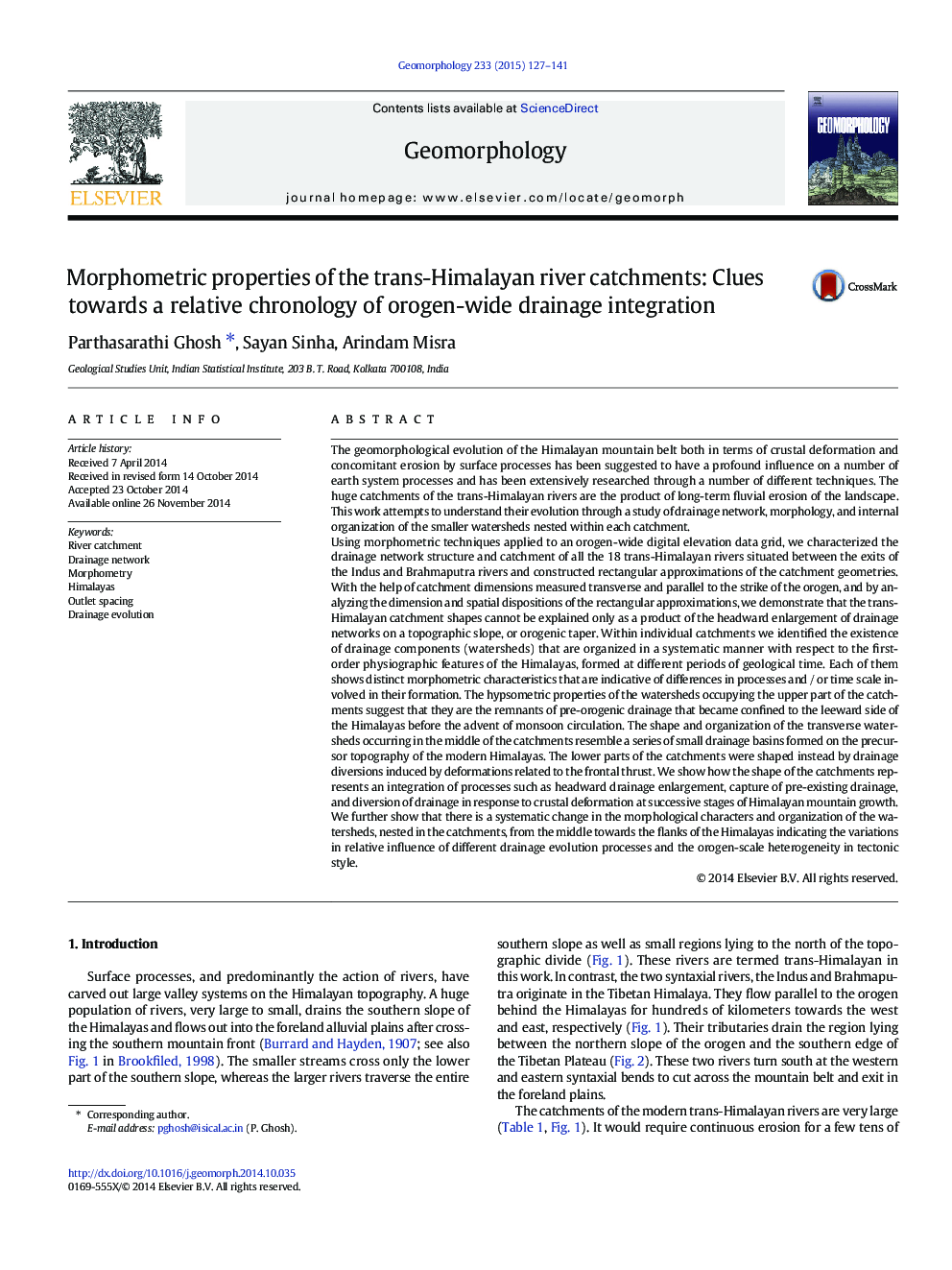| کد مقاله | کد نشریه | سال انتشار | مقاله انگلیسی | نسخه تمام متن |
|---|---|---|---|---|
| 4684228 | 1635416 | 2015 | 15 صفحه PDF | دانلود رایگان |
عنوان انگلیسی مقاله ISI
Morphometric properties of the trans-Himalayan river catchments: Clues towards a relative chronology of orogen-wide drainage integration
ترجمه فارسی عنوان
خواص مورفومتریک حوضه رودخانه هیمالیا: نشانه های مربوط به یک تاریخچه نسبی از یکپارچگی زهکشی گسترده اورانگن
دانلود مقاله + سفارش ترجمه
دانلود مقاله ISI انگلیسی
رایگان برای ایرانیان
کلمات کلیدی
حوضه رودخانه، شبکه زهکشی مورفومتری، هیمالیا فاصله خروجی، تکامل زهکشی،
موضوعات مرتبط
مهندسی و علوم پایه
علوم زمین و سیارات
فرآیندهای سطح زمین
چکیده انگلیسی
Using morphometric techniques applied to an orogen-wide digital elevation data grid, we characterized the drainage network structure and catchment of all the 18 trans-Himalayan rivers situated between the exits of the Indus and Brahmaputra rivers and constructed rectangular approximations of the catchment geometries. With the help of catchment dimensions measured transverse and parallel to the strike of the orogen, and by analyzing the dimension and spatial dispositions of the rectangular approximations, we demonstrate that the trans-Himalayan catchment shapes cannot be explained only as a product of the headward enlargement of drainage networks on a topographic slope, or orogenic taper. Within individual catchments we identified the existence of drainage components (watersheds) that are organized in a systematic manner with respect to the first-order physiographic features of the Himalayas, formed at different periods of geological time. Each of them shows distinct morphometric characteristics that are indicative of differences in processes and / or time scale involved in their formation. The hypsometric properties of the watersheds occupying the upper part of the catchments suggest that they are the remnants of pre-orogenic drainage that became confined to the leeward side of the Himalayas before the advent of monsoon circulation. The shape and organization of the transverse watersheds occurring in the middle of the catchments resemble a series of small drainage basins formed on the precursor topography of the modern Himalayas. The lower parts of the catchments were shaped instead by drainage diversions induced by deformations related to the frontal thrust. We show how the shape of the catchments represents an integration of processes such as headward drainage enlargement, capture of pre-existing drainage, and diversion of drainage in response to crustal deformation at successive stages of Himalayan mountain growth. We further show that there is a systematic change in the morphological characters and organization of the watersheds, nested in the catchments, from the middle towards the flanks of the Himalayas indicating the variations in relative influence of different drainage evolution processes and the orogen-scale heterogeneity in tectonic style.
ناشر
Database: Elsevier - ScienceDirect (ساینس دایرکت)
Journal: Geomorphology - Volume 233, 15 March 2015, Pages 127-141
Journal: Geomorphology - Volume 233, 15 March 2015, Pages 127-141
نویسندگان
Parthasarathi Ghosh, Sayan Sinha, Arindam Misra,
